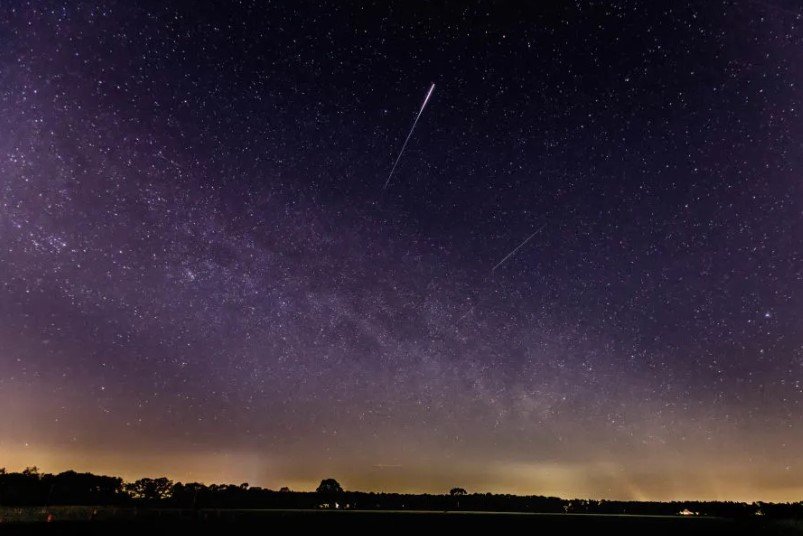Stargazers, clear your calendars. The Lyrid meteor shower is back—and it’s hitting its peak tonight. If you’re lucky and the sky’s dark enough, you might catch up to 18 shooting stars an hour. Just look up.
It’s one of the oldest known meteor showers, dating back more than 2,700 years. And while it’s not the flashiest one we get all year, it’s a reliable cosmic showstopper, especially after a lull in celestial activity. For many skywatchers, this marks the real start of 2025’s meteor season.
How and When to Watch the Lyrids
The peak viewing window is set for late Monday night into early Tuesday morning, April 22–23. The best time? Between 10 p.m. and 4:30 a.m. local time.
If you’re in the Northern Hemisphere, you’re in the sweet spot. NASA meteor expert Dr. Bill Cooke says rural or low-light areas offer the best viewing conditions. But there’s a catch: a waning crescent moon. Its glow might wash out some of the fainter meteors, so darker skies matter more than ever this year.
Still, even with a bit of moonlight, you can catch the brighter meteors zipping across the sky. It won’t be like the wild light shows of the Perseids or Geminids, but for those willing to be patient, the Lyrids will deliver.

Where to Look in the Sky
Lyrids appear to radiate from the constellation Lyra. Specifically, near the bright star Vega—one of the brightest in the night sky.
Now, you don’t need to locate Vega precisely to enjoy the show. Just lie back, give your eyes 20–30 minutes to adjust to the dark, and scan the whole sky. Meteors can streak across any part of it, though they’ll generally seem to come from Lyra’s direction.
One quick tip? Don’t use telescopes or binoculars. Your best bet is the naked eye, as they restrict your field of view.
What Makes the Lyrids Special
They’re not the biggest meteor shower of the year, but the Lyrids have a few tricks up their sleeve.
For starters, they come from Comet Thatcher—a comet that orbits the sun every 415 years. As the Earth plows through its dusty trail, tiny bits of debris slam into our atmosphere at around 49 kilometers per second, igniting as meteors.
And while the average hourly rate is around 10 to 15 meteors, this year could climb up to 18 per hour under the best conditions. These meteors are fast and often bright, with long glowing trails. Sometimes, they even produce fireballs.
Every few decades, the Lyrids surprise with sudden outbursts. Back in 1982, viewers saw up to 90 meteors an hour. That kind of display isn’t expected this year, but the Lyrids are known for their unpredictability.
Quick Prep Tips for a Better Show
If you want to catch the Lyrids in all their glory, here’s what you should keep in mind:
-
Check the weather: No one sees meteors through clouds. Clear skies are a must.
-
Get out of the city: Light pollution kills the vibe. Head to a dark rural area if you can.
-
Skip the screen time: Turn off your phone to let your eyes adjust. The darker your vision, the more you’ll see.
-
Bring a blanket: And maybe some snacks. It’s going to be a long, cold night.
Meteor Shower Dates to Watch in 2025
If you miss this one, don’t sweat it. 2025 has a full lineup of meteor showers ahead. Here’s a quick look at some of the biggest upcoming ones:
| Meteor Shower | Peak Dates | Approx. Meteors/Hour |
|---|---|---|
| Eta Aquariids | May 5–6 | 50 |
| Perseids | August 12–13 | 100+ |
| Draconids | October 8–9 | Variable |
| Orionids | October 21–22 | 20–25 |
| Geminids | December 13–14 | 120+ |
One sentence for the night owls: you might be sleep-deprived tomorrow, but the memory of a shooting star is worth the yawn.
